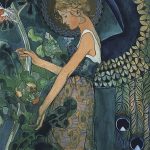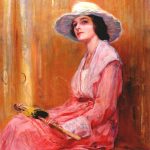Marcel Dyf, born on October 7, 1899, in Paris, France, carved a niche for himself in the world of art through his vibrant and expressive paintings. A master of color and light, Dyf’s artistic journey unfolded against the backdrop of the 20th century, marked by tumultuous events and a dynamic evolution of artistic styles.
Early Artistic Urge
Dyf’s early years were imbued with a natural inclination towards art. Raised in a family that fostered creativity, he embarked on his artistic journey at a young age. His formal training commenced at the École des Beaux-Arts in Paris, where he immersed himself in the academic traditions while cultivating a distinctive approach to color and form.
In the early 1920s, Dyf found inspiration in the landscapes of Provence, a region that would become a recurring muse in his works. The vibrant colors and idyllic scenes of the French countryside left an indelible mark on his artistic sensibilities, laying the foundation for the luminous palette that would characterize his later paintings.
Impressionistic Affinities
Dyf’s encounter with the works of the Impressionist masters, particularly Claude Monet, had a profound impact on his artistic development. The play of light and color in Monet’s canvases resonated with Dyf, influencing his decision to embrace an Impressionistic style. The artist’s palette became a symphony of hues, capturing the fleeting effects of sunlight and atmosphere in his paintings.
During this period, Dyf honed his skills in capturing the essence of the moment, whether it be the dance of light on water or the effervescent beauty of a flower garden. His commitment to the principles of Impressionism, characterized by loose brushstrokes and a focus on atmosphere, contributed to the evolution of his unique visual language.
Wandering Brushstrokes and Travel
Dyf’s artistic pursuits extended beyond the borders of France, as he embarked on journeys that would enrich his creative vision. Traveling to North Africa and Italy in the 1930s, Dyf absorbed the diverse cultural influences and landscapes, infusing his paintings with a global perspective. The warm tones of the Mediterranean and the exotic allure of foreign locales added new dimensions to his already dynamic palette.
The artist’s peripatetic lifestyle continued throughout his career, with trips to Spain, Greece, and the United States. Each destination left an imprint on Dyf’s work, contributing to the rich tapestry of his artistic expression. His ability to translate the essence of different landscapes onto canvas showcased the universality of his vision, transcending geographical boundaries.
Post-War Resilience and Recognition
The aftermath of World War II posed challenges for artists navigating a changed world. Dyf, however, exhibited resilience and a determination to bring beauty and joy through his art. His post-war works continued to radiate with color, offering a respite from the grim realities of the time. Dyf’s commitment to celebrating life and capturing its fleeting beauty resonated with a post-war audience seeking solace and hope.
Recognition soon followed, and Dyf’s paintings garnered acclaim in both France and beyond. His inclusion in prestigious exhibitions and the acquisition of his works by prominent collectors solidified his standing in the art world. Dyf’s ability to evoke emotions through his canvases, whether depicting landscapes, portraits, or still lifes, contributed to the universal appeal of his art.
Legacy of Light and Color
Marcel Dyf’s legacy endures through the timeless beauty of his paintings. His mastery of color, expressed through vibrant and harmonious palettes, continues to captivate art enthusiasts. Dyf’s landscapes, with their shimmering fields of flowers and sunlit vistas, evoke a sense of tranquility and optimism. The artist’s commitment to the aesthetic experience, conveyed through his use of wandering brushstrokes and luminous hues, sets him apart as a true maestro of color.
Dyf’s passing on September 15, 1985, marked the end of a prolific artistic journey. However, his influence lives on through the enduring appeal of his work. Museums, galleries, and private collectors cherish Dyf’s paintings for their ability to transcend time and transport viewers into a world bathed in the radiant hues of his imagination. Marcel Dyf’s legacy remains eternally linked to the celebration of light, color, and the boundless beauty of the world he so brilliantly captured on canvas.






